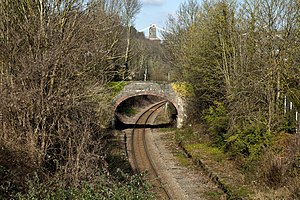Ashton_Gate_Platform_railway_station
Ashton Gate railway station
Disused railway station in Ashton Gate, Bristol
Ashton Gate railway station was a railway station serving the Ashton Gate area of Bristol, England, which included Ashton Gate football ground, the home ground of Bristol City F.C. It was located on the Portishead Railway.
Recent proposals have been made for the station to reopen as part of the MetroWest project to improve rail transport in the Greater Bristol area.[1]


